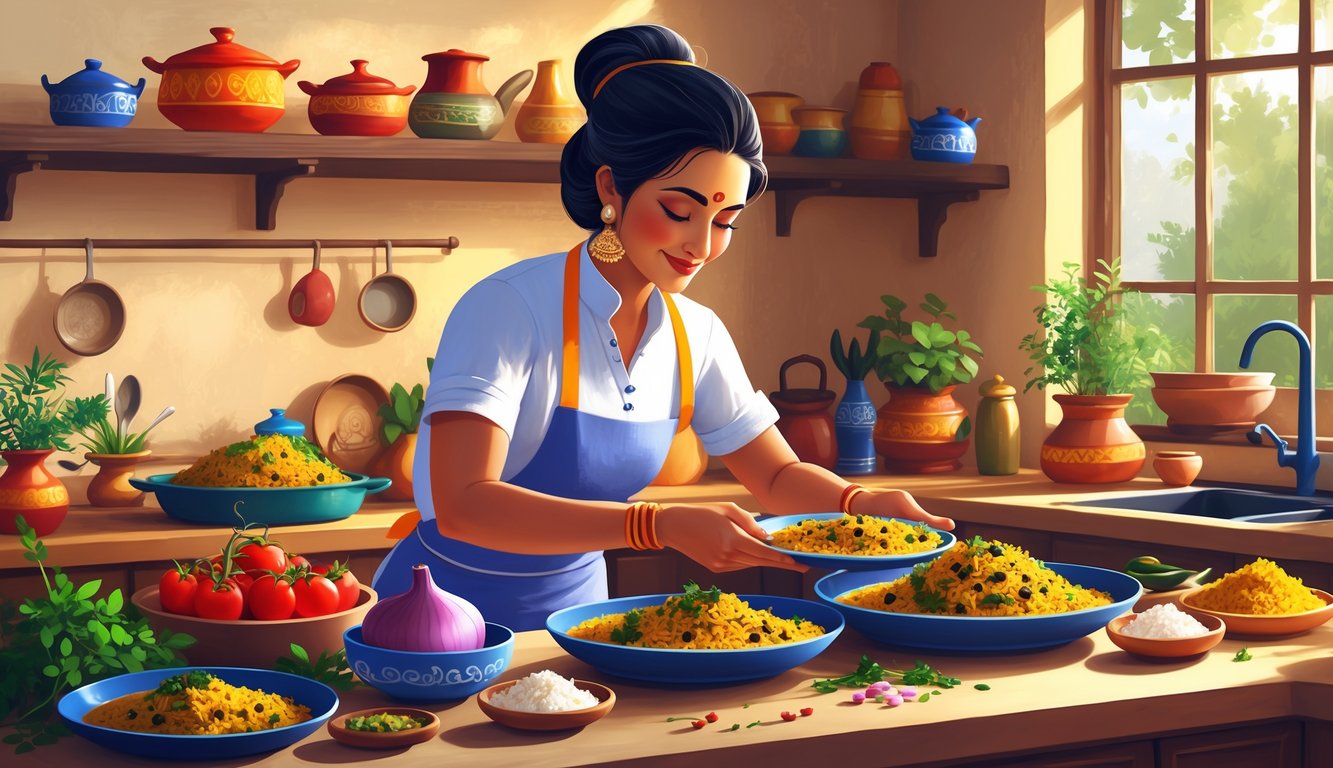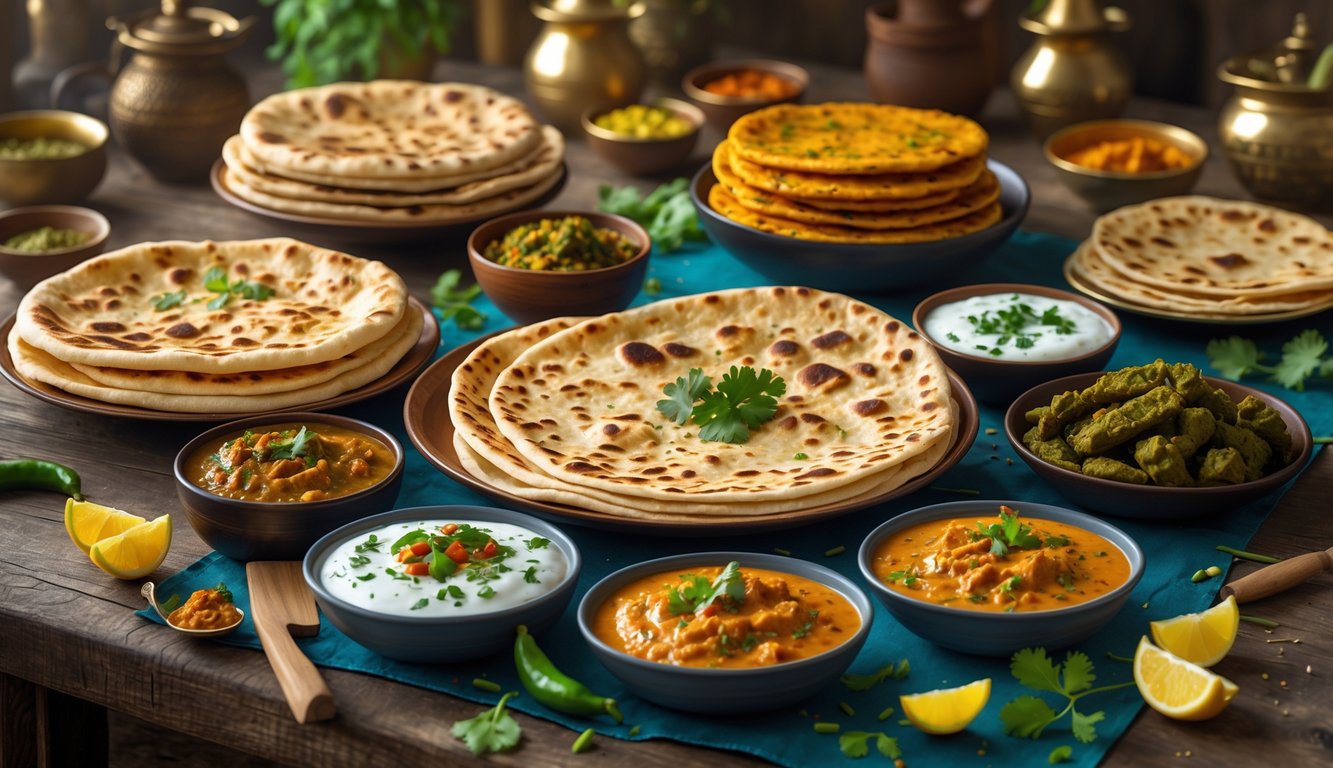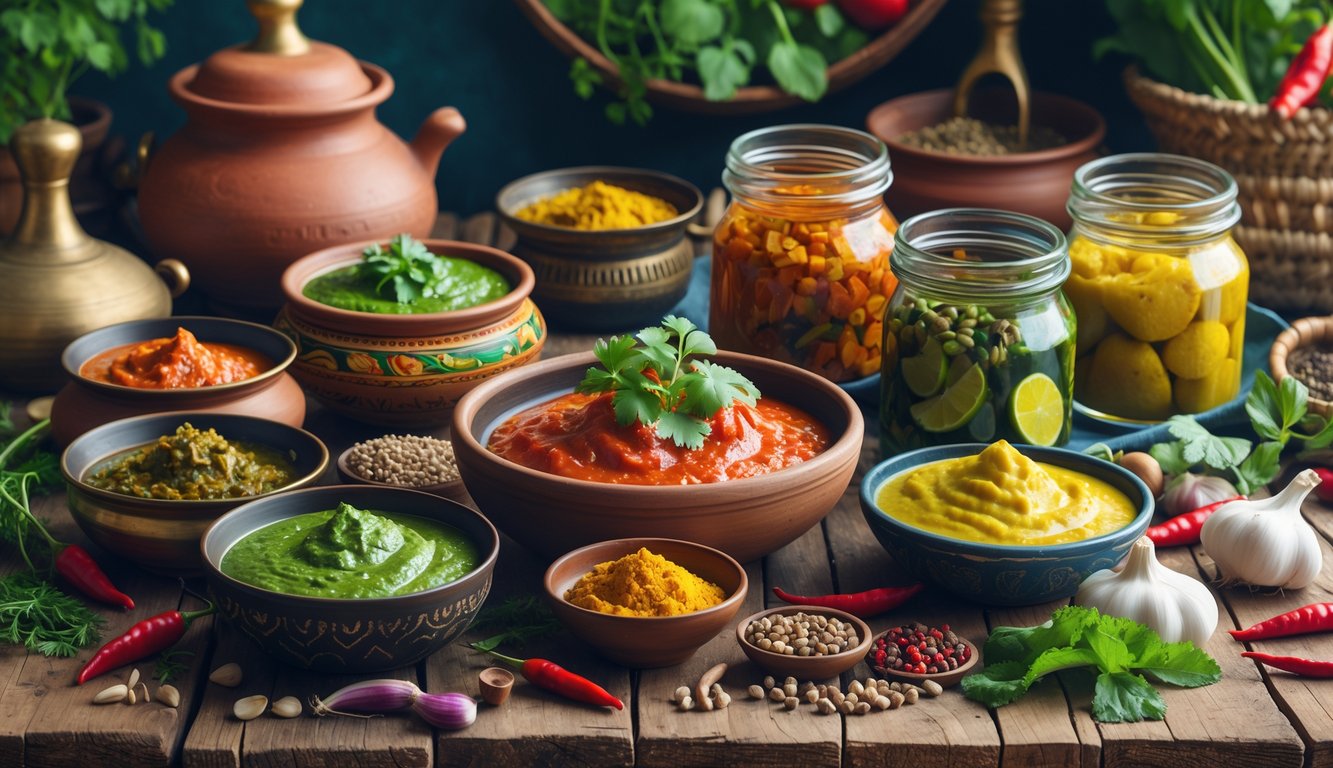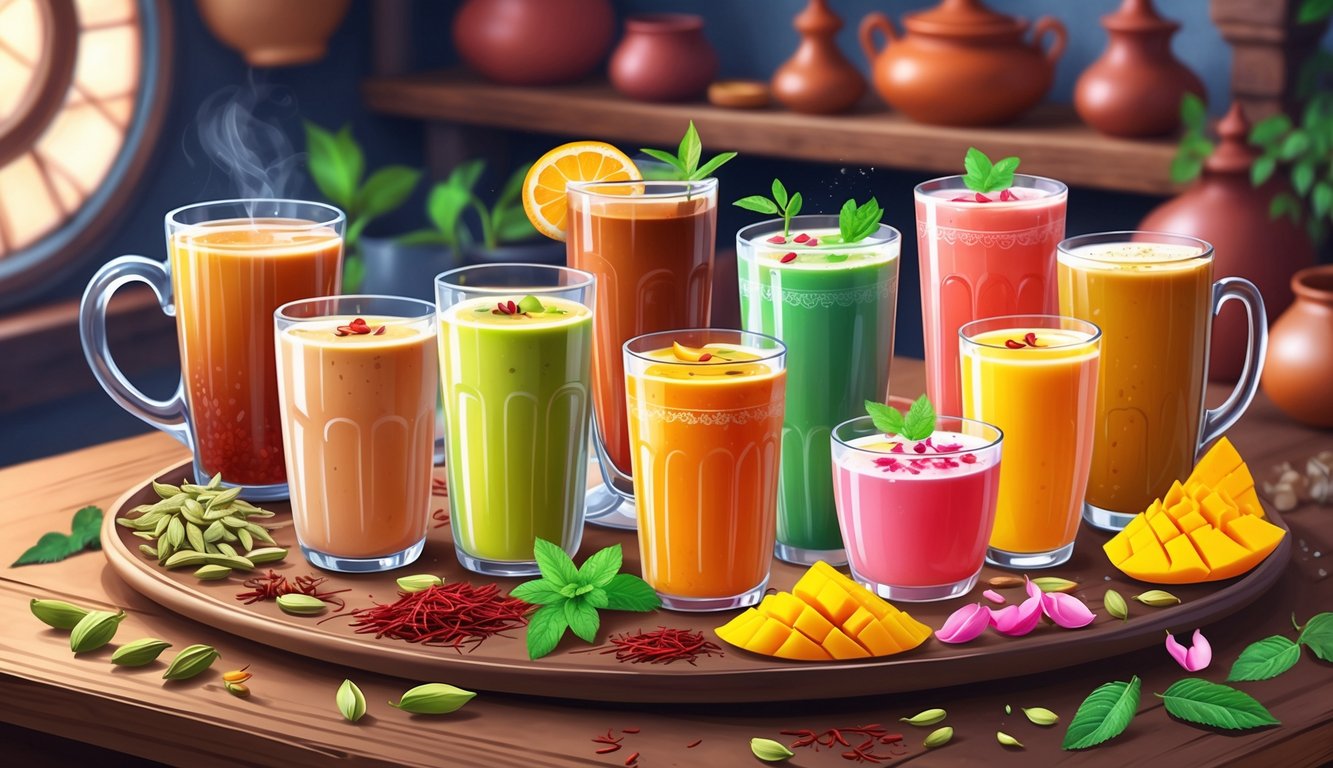
Bread and Accompaniments for Every Meal

Saw some “chef” claim you need a tandoor for naan. Nope. Flatbreads get dismissed as sidekicks, but honestly, if your bread is bad, the meal’s already doomed. There’s so much nonsense out there—hydration levels, kneading times, “resting the dough.” Most of it’s just stalling.
Homemade Naan and Garlic Naan
Last weekend, my stove laughed at my naan attempts. Forget the tandoor fantasy—just get a cast iron pan, wet one side of the dough, slap it on, and pray. If the pan’s cold, you get sad pancakes. Garlic naan? Only put garlic on after flipping or you’ll burn it. That smell? Heartbreaking.
Bakers talk ratios; aunties just dump in yogurt and hope. I use about a half-cup yogurt per two cups flour. Homemade naan, brushed with butter, is ridiculously better than restaurant naan that shows up leathery. Rip, dunk, judge the world, move on.
Roti, Dosa, and Beyond
Rolling chapati thinner doesn’t make you a genius—it just helps if your dal is boring. Wheat farmer told me (three times) that real roti is just flour and water. Ghee after, not before. Roti doesn’t need to rest overnight. Nobody’s got time for that.
Dosa, though, I once babysat batter for twelve hours because internet wisdom said so. Turns out, temperature matters more. Warm oven, check after six hours, move on. Serve with sambar, pickle, or whatever’s in the fridge. Some homes just use Maggi sauce, and honestly, it works.
Flatbreads are chaos. Griddle, flour, and the willpower not to scream when one burns.
Chutneys, Pickles, and Condiments that Transform Meals

What really drives me nuts? Fancy Indian restaurants never bring the right chutneys or pickles. I keep half-finished jars in the fridge—homemade mango pickle, coriander-mint chutney, whatever’s left. Every time I eat out, I wonder why nobody just brings their mom’s mango chutney instead of that weird, syrupy stuff.
Mango and Mint Chutneys
Why do restaurants serve mango chutney that tastes like candy? At home, I chop up half-ripe mango (not too soft, not tennis-ball hard), toss it with salt, cracked mustard, a pinch of methi, turmeric, sometimes kalonji if I’m feeling extra. Chill it for half an hour, then eat it straight off the spoon. Chef Amrita Raichand claims her homemade stuff is “savory coconut macaroon” territory, but I doubt she’s ever cooked for a kid who only eats sweet-sour with chili.
Mint chutney? Handfuls of cilantro, mint, green chili, lemon—never the same twice. Sometimes I add nuts or coconut if nobody’s watching. Store-bought is always weirdly flat and toothpaste-y. Homemade loses color in an hour, but the flavor? Way better. If your chutney turns army-green, you nailed it. Spread it on dosa, samosa, leftover rice—whatever. Food historian K.T. Achaya says “ground together edible condiments” have been around since the 1600s (Chef’s Pencil), which is cool, I guess, but mostly I just want it to taste good.
Raita and Yogurt-based Sides
People keep acting like raita’s just a side note—yogurt and cucumber, whatever, but honestly, I can’t choke down the store stuff. It’s always weirdly runny or, I don’t know, slimy? I grab the thickest dahi I can find (full-fat, obviously), dry-roast cumin in a steel pan until my smoke alarm gets nervous, and dump in a ton of grated cucumber (which I have to squeeze dry or it turns to soup). Sometimes I’ll toss in black salt, but that’s a mood thing. Saw a chef add pineapple once and nearly walked out, but my cousin likes it, so… maybe I’m just old.
Yogurt marinades are wild, though—chicken soaks up all that tang and comes out way softer than anything I’ve had at a restaurant. I mean, there’s actual science, enzymes and whatever, but mostly, it just tastes better. North Indian families? They pack paratha with mango pickle and a blob of boondi raita, and suddenly it’s a “real meal.” I don’t know, that’s just what the old folks say. If you’re bored, just dump mint and coriander into yogurt and you’ve got a dip for literally everything—kebabs, biryani, roasted potatoes, even raw carrots if you’re desperate. Kids eat more veggies if there’s raita nearby. That’s just a fact.
You can find endless charts online about raita “types,” but none of them admit how fast my family will inhale a bowl of jeera raita. It’s not just a side. It’s the only thing standing between me and a mouthful of vindaloo regret.
Signature Indian Beverages for All Occasions

I wish I could say I’m one of those “one chai fits all” people, but my kitchen drawer is just a graveyard of mango pulp cans, random cardamom pods, and half-open yogurt tubs. YouTube chefs make it look so tidy, but nope—sticky counters, splashes everywhere, and somehow my version always tastes brighter than anything boxed. Is that just me?
Masala Chai at Home
Can’t even count how many times someone’s begged me to “make it stronger.” Real masala chai isn’t that dusty packet stuff. It’s ginger you smashed with a rolling pin, cardamom you forgot to peel, cinnamon sticks that look suspiciously old, and a handful of black pepper—then Assam tea, because that’s what the tea-wallahs say, and who am I to argue? For two cups, I’ll use a thumb of ginger, three cardamoms (smushed), a cinnamon stick, a pinch of pepper, and a tablespoon of strong tea.
Every so-called expert, whether they’re yelling from a Mumbai train or writing for Piping Pot Curry, insists: milk goes in after the spices, not before. Sugar? I dump in a big spoonful because, well, I like it. There are endless fights online about this. Some days, it’s magic—fragrant, spicy, perfect. Other days, it’s watery and I blame the pan. Still, the smell alone is enough to make me forget about the bland restaurant chai (here’s some old-school advice). Sometimes it’s a flop, but at least it’s mine.
Lassi and Mango Lassi
If you’ve ever paid $7 for a “mango lassi” that tasted like melted glue, you get why I make my own. Real lassi is all about texture—icy, smooth, but never watery. You need whole-milk yogurt, no negotiating. Sweet lassi is just yogurt, cold water, sugar, cardamom, maybe rosewater if you’re feeling old-school (my grandma’s move). Salt lassi? Salt, cumin, and a warning: don’t mix the two, trust me.
Mango lassi is a whole different animal. Pureed fresh mango (Alphonso if you can find it, don’t bother with the stringy stuff), full-fat yogurt, sugar, and sometimes a squeeze of lemon if the mango’s too sweet. Don’t drown it in ice or thickeners—just keep it cold. Every so-called Indian drinks expert will tell you: homemade is unbeatable. I tried saffron once—looked fancy, tasted like a dare. I spill some every time; mango stains are forever.
Refreshing Drinks for Summer
Sattu, jaljeera, nimbu pani, those weird rose syrups hiding behind the ketchup—why do restaurants never get these right? At home, I keep sattu (roasted chickpea flour) on hand, mix it with cold water, salt, roasted cumin, lemon. It’s ugly, filling, and weirdly satisfying after a sweaty walk. Apparently, it’s healthy too, but I just like the taste.
Jaljeera at buffets? Always warm, always gritty. Homemade, it’s ice-cold, spicy, and actually refreshing if you don’t mess up the lemon. I always overdo the black salt and get called out for “ruining” it, but whatever. Nimbu pani is way easier—lemon juice, sugar or salt, cold water, maybe mint. Ice is optional, but my family acts like it’s a human rights violation to skip it. Sometimes someone sneaks in khus or rose syrup and everything goes off the rails. Homemade summer drinks are sharper, less sweet, and way less predictable than anything I’ve found eating out.



